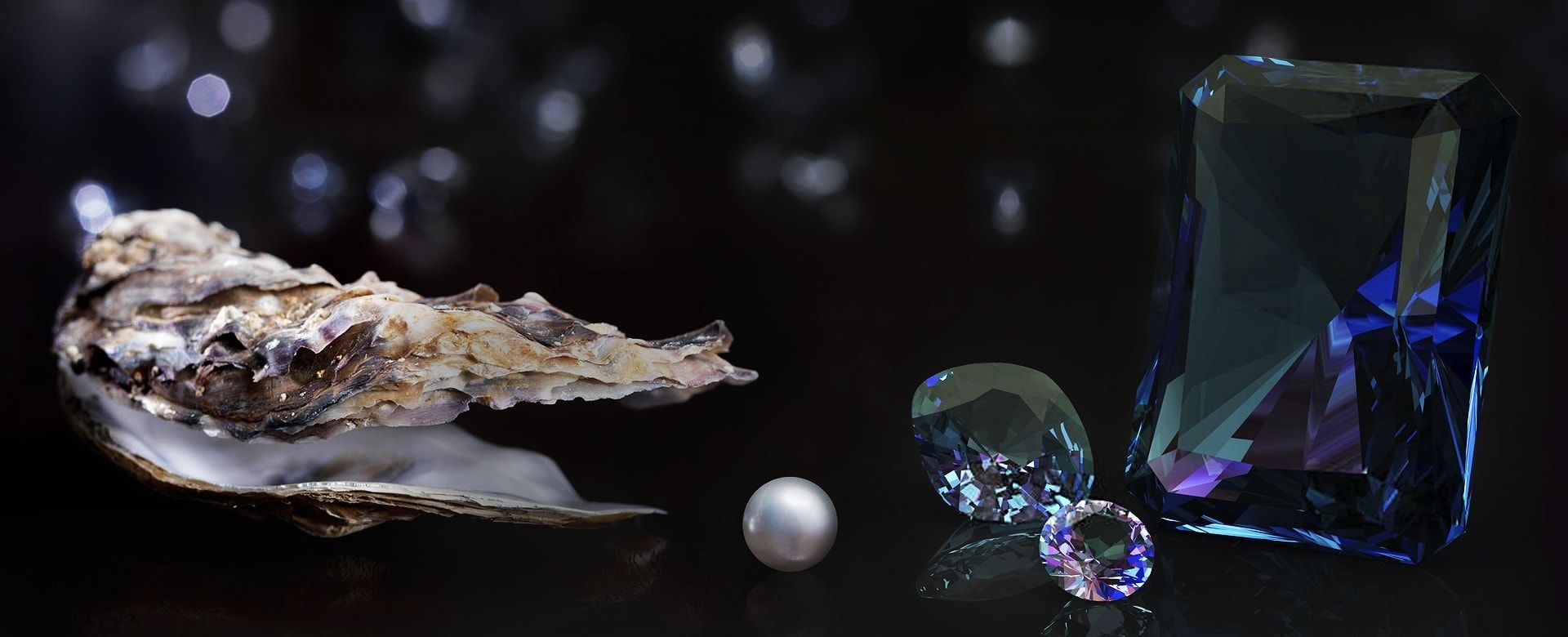Article Highlights
With eight different attractive variations, June birthstones are precious stones with highly acclaimed healing properties. Individuals born in June have different options for birthstones that fit their budget and mood. June gemstones have different attractive colors and price points. Read further to discover and understand these common June birthstones.
Pearl
Pearl is the modern birthstone in the US and Britain. It is also the June birthstone in the Indian and Old Arabic calendars.
Pearl gemstones originate from rivers, lakes, and oceans globally. They are the only gemstones made by living creatures. Pearls are created inside the shells of select clams and oyster species.

Mollusks also make pearls by depositing calcium carbonate layers around microscopic irritants, in most cases, a grain of sand that gets lodged in their shells. Pearls formed within the mollusks’ tissues tend to be pear or spherical-shaped and are in high demand to be used for jewelry. On the other hand, pearls formed on the shell’s inside are irregularly shaped and are not in high demand.
Currently, farmers culture-raise pearls in oyster farms that sustain a thriving pearl industry. These gemstones are made of aragonite, a soft carbonate mineral that makes up the mollusks’ shells.
Pearls have a uniquely delicate translucent and luster that make them one of the most sought-after stones. The pearl stones depend on the mollusk species producing them and the environment.
White pearls are the most common types, but you can find them in many delicate shades that include mauve, green, lavender, yellow, blue, gray, cream, black.
Pearl Meaning
The name “pearl” is derived from the Old French “Perle.” It also comes from the Latin word “Perna,” meaning “leg,” referencing an open mollusk shell’s leg-of-mutton shape.
However, “pearl” partly refers to any gem valuable and rare since perfectly round, smooth, natural pearls are uncommon. Pearls have since been associated with innocence, humility, and purity. To most individuals, pearls mean “sweet simplicity.” Traditionally, people gifted each other pearls as wedding gifts.
Pearl History
Ancient Middle Easterners believed that the stones were teardrops from heaven. Christopher Columbus, the Italian explorer and navigator, believed that mollusks formed pearls from dew drops. The Chinese also believed that pearls originated from a dragon’s brain.
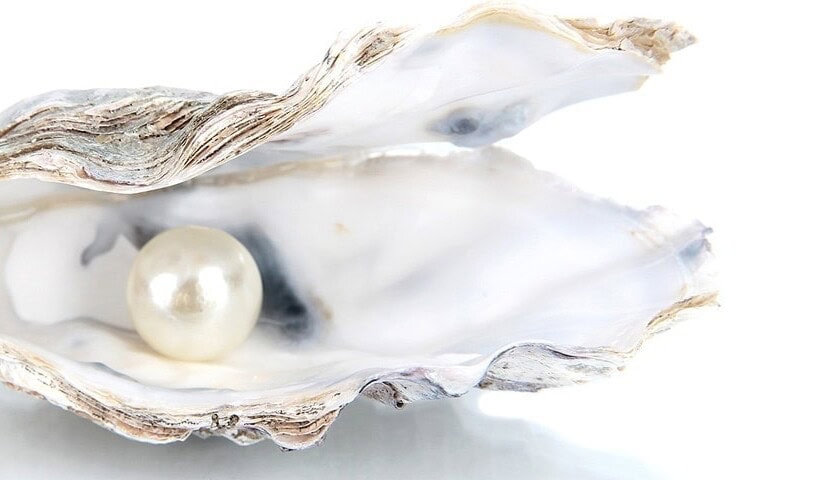
In the ancient Sanskrit text, Atharvaveda, pearls were believed to bestow prosperity and long life. Ancient Asians used pearls medically to alleviate hemorrhages and indigestion.
Pearls were initially found in different parts globally. However, natural pearling is currently restricted to the Persian Gulf waters close to Bahrain.
Currently, Australia possesses among the world’s last remaining diving fleets. They also harvest natural pearls from the Indian Ocean.
The majority of freshwater cultured pearls originate from China, while South Sea pearls are cultured in Indonesia, the Philippines, and the Australian northwestern coastline.
Natural Pearls Vs. Cultured Pearls.
Natural Pearls
These gems are scarce. They structure in the mantle tissues or bodies of select mollusks. This is mainly around a microscopic irritant and, in most cases, without any human intervention or help.
Cultured Pearls
These are artificially grown and produced in pearl farms. They require human intervention and care. Mollusks used in the culturing process are raised specifically for this task. Once the mollusk is old enough to accept the mother-of-pearl bead nucleus, a technician implants the bead through a delicate surgical procedure. The mollusks are then returned to the water and taken care of until the cultured pearls are harvested.
Unfortunately, not all mollusks produce pearls, and if they do, not all pearls are of the desired high quality.
Pearl Types
Pearls come in four primary types of cultured whole pearls. These include;
Akoya Cultured Pearls
They are the most common type of saltwater cultured pearls to the American market and an assortment of western markets. Most pearl enthusiasts think of cream or white-colored Akoyas as the classic pearl used for jewelry, mostly single-strand necklaces. China and Japan are the common producers of Akoya cultured pearls.
Tahitian Cultured Pearls
They are cultivated and cultured mainly around the French Polynesia islands (majorly, Tahiti). The Tahitian cultured pearls are sometimes referred to as black pearls, and they tend to have a wide color range. These saltwater cultured pearls might be gray, brown, or black, and they can have pink, purple, green, or blue overtones.
South Sea Cultured Pearls
These saltwater cultured pearls mainly originate from the Philippines, Indonesia, and Australia. Their colors vary from white to silver to golden, depending on the oyster type. Factors that contribute to the value of these South Sea culture pearls include their limited critical growing conditions and their large size as well as thick nacre, as a result of more extended growing periods.
Freshwater Cultured Pearls
China is the leading source of these pearl types. They are the most commonly produced pearls in all regions.
The freshwater cultured pearls are also popular among jewel designers pearl shoppers. This owes to their impressive size ranges, colors, and shapes.
The pearls are primarily cultivated in freshwater ponds and lakes, often with multiple pearls grown in a single oyster.
Pearl Quality Factors
Pearl qualities tend to determine their overall value in the market. There are different factors to consider when determining pearl qualities. These include:
Size
Natural or cultured pearls are measured in millimeters, both width and lengthwise. The spherical pearls are measured diameter-wise.
When all other value factors are constant and similar, the bigger the pearl size, the more rare and valuable they are than smaller pearls.
Shape
Spherical pearls are the hardest to come by, whether natural or cultured. When all other value factors are constant and similar, the round or spherical spheres are the most valuable. They are easier to match and ideal for strands.

Fortunately, even if the pearls are not round, their value is still determined by their symmetry. Some jewel lovers will prefer the oval shapes, oval, or baroque-shaped pearls, which may increase their value.
Color
Pearls come in a wide range of hue choices. You can find warm hues such as yellow, pink, or orange, among others. You can also find cool shades such as violet, green, or blue. These colors tend to be muted with a soft subtle quality.
The value of specific pearl colors is determined by the law of supply and demand at any particular time. If the supply of a certain pearl color, its value will automatically increase.
Luster
Luster is the most important value factor for pearls. Luster is the eye-catching glow and light reflection from the pearl’s surface. Luster gives the pearl its unique beauty. Only a pearl lover or jewel expert should be able to classify the pearl’s luster. However, for your sake, the highest luster quality should show reflections that appear bright and sharp. The poor quality luster shows dim and diffused reflections. Obviously, the higher the luster, the pearl’s value.
Surface Quality
Not all gemstones are lucky to achieve perfection. Pearls may show abrasions that look like scratches on the surface. Some may show an irregular ridge that looks like a wrinkle.
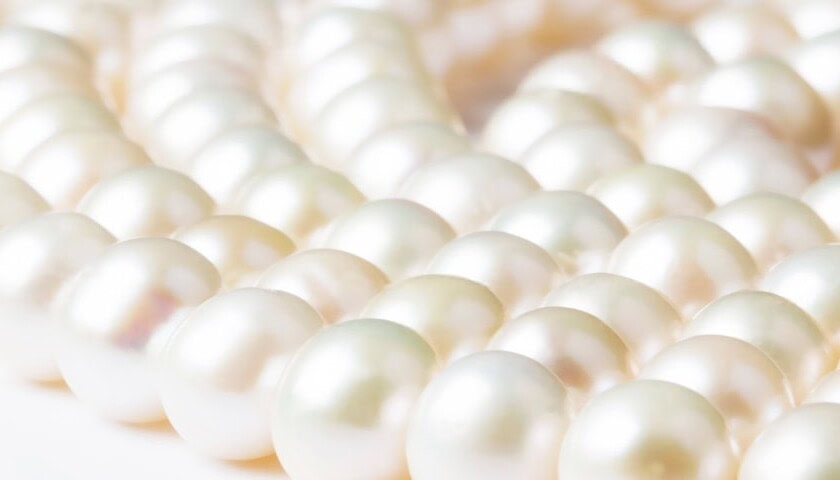
Clean surface pearls are blemish-free and have minimal imperfections that are almost visible even in a trained jeweler’s eyes. A blemish-free pearl gains more value, the less the irregularities and blemishes.
Nacre Quality
Nacre and luster quality are closely linked. If the pearl nucleus is visible under the nacre or the gem has a dull, chalky appearance, then the nacre is thin. A thin nacre affects the gem’s luster and durability. Top-quality nacre is mostly thick and durable with a superb luster, increasing the pearl’s value.
Matching
Some jewel designers tend to mix pearl shapes, colors, and sizes for rare effects. However, for most pearl jewelry, the different colors, shapes, and sizes should match all the quality factors.
Pearl Healing Properties
Physical Healing Properties
Pearls help in the treatment of digestive tract disorders and muscular system conditions. They can be used in aiding fertility and help ease pain and discomfort during childbirth.
Pearls help to restore and maintain your body’s balance and natural rhythm. They also regulate your hormone levels. The stones also help heal individuals suffering from lung diseases such as asthma, chronic bronchitis, and tuberculosis. Pearls help heal your liver, heart, kidneys, and urinary system.
It also has a laxative and sedative effect to help neutralize poison and reduce acidity. If combined with the Blue Peruvian Opal, pearls help treat eye ailments, bleeding, fever, and indigestion. It is effective in controlling skin infections such as rosacea and acne. It controls wrinkles, scars, pimples, and blemishes.
Emotional Healing
The stone carries a feminine vibration and has a strong connection with the moon. As such, they can be used to women who are emotionally displaced during their menstrual cycles.
Pearls help with mood swings for men and women. They bring a sense of proportion to any overwhelming situation. The stone has a gentle vibration that soothes your emotions, especially for the bereaved in mourning.
Pearls and Chakra
Pearls carry their own vibrations and frequencies just like other gems. Unlike other birthstones and how you use them, pearls are unique and a little unique when it comes to chakras.
Pearls are mostly used on the Crown Chakra. It brings enlightenment, illumination, and insights on a mental frequency. Pearls also raise awareness and connect one with the Divine.
In the fifth dimension, the crystal is closely aligned with the Root or Base Chakra. As such, the Base and Crown chakras both benefit from the pearl’s frequencies and energies.
You can use Pearl to connect deeply with the Earth via the base chakras. The crystal forms a direct connection with the Earth Star Chakra, which lies beneath our feet and holds our life purpose and destiny patterns. You can combine Pearl with Diamond or Clear Quartz to activate the Crown Chakra.
Pearl Care and Cleaning
Pearl ranks 2.5 on the Mohs Scale, meaning it is extremely soft and easily scratched. However, with proper care, pearl can run in your family for generations to come.
The gem has favorable toughness. However, factors such as dehydration, aging, and excessive bleaching during processing tend to make some pearl gems fragile.
It is generally stable to light. However, heat from intense light can result in a cracked nacre or dehydration. Cultured pearls are prone to cracking, splitting, and discoloring when exposed to high heat.
Chemicals and acids can also damage pearls. These chemicals include hair spray, cosmetics, and perfume. Avoid cleaning pearls in an ultrasonic or steam cleaner. You can use warm, soapy water for occasional cleaning. If your pearls are strung, ensure the string is completely dry before putting it on.
If you intend on cleaning your pearls routinely, it is recommended to wipe the cultured pearls using a soft, clean cloth after wearing them.
Moonstone
Moonstone is the modern birthstone in the US and Britain. It is also a June birthstone in the ancient Tibetan calendar. According to Hindu mythology, the stone is made of solidified moonbeams. Different cultures associate the Moonstone with the moonlight. This is because the stone’s internal structure scatters the light that strikes it, forming a phenomenon known as adularescence. Its visual effect almost resembles the full moon shining via a veil of thin, high clouds.

According to legends, the Moonstone brings good luck. Myths also believe that you could peak into the future if you placed a moonstone in your mouth during a full moon.
The stone was once known as “adularia,” a name that originated from a Switzerland city. Mt. Adular, currently known as St. Gotthard. The city was one of the best sources of top-quality moonstones.
Moonstone has been associated with the Green and Roman lunar deities. The stone is often associated with relieving anxiety and stimulating clairvoyance.
Moonstone Types
Blue (Cat’s Eye) Moonstone
It is transparent and crystal clear with a floating blue tone on its surface. The largest and high-value blue moonstones are majorly harvested from Myanmar (Burma). The most desirable of these tend to have an intense blue hue. The Cat’s Eye Moonstone promotes mental clarity and inner vision.
Gray Moonstone
Also known as the New Moon Stone, the Gray Moonstone carries the mysterious and potent new moon energies. It is a stone of seeing beyond the veil. The grey Moonstone is an excellent magnifier of intention and helps you summon creations from the void.
White Moonstone
This stone represents the full moon’s energy at the height of its power. The White Moonstone stimulates psychic perception aspects. It also enhances vision and dream work.
It can also magnify your emotions. The White Moonstone helps activate the kundalini energy in women while opening the inner eye.
The stone’s energy helps men to reach emotional balance and develop their receptive power.
Yellow or Peach Moonstone
It has a gentle, loving energy that stimulates the mind and supports the heart. The peach moonstone allows you to see the positive, loving existence of the Divine in complex situations.
The stone carries a soothing energy for your emotional body and is good for intuitive or sensitive individuals. The Yellow Moonstone soothes your worry or anxiety and helps you celebrate your life’s positive experiences.
Rainbow Moonstone
It has a milky patchy appearance originating from the white orthoclase inclusions and layers. The stone acts as a prism that diffuses energy throughout the aura.
The rainbow moonstone clears one’s mind and psychic senses. It is a positive protection stone that deflects negative energies.
The stone facilitates the activation and alignment of all your chakras.
Moonstone Healing Properties
Emotional Healing Properties
The Moonstone is famous for its soothing, calming qualities on an emotional being. It has a healing and balancing energy that helps you master your emotions by bringing them under the Divine’s control instead of repressing or expressing them.
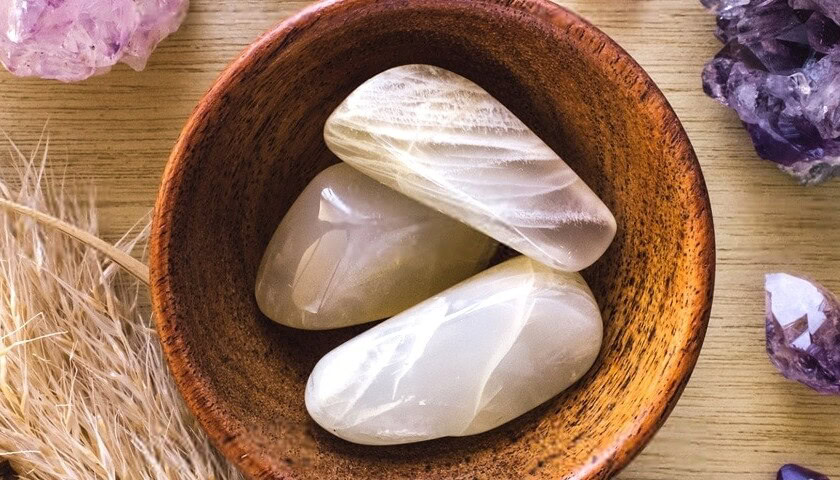
The Moonstone helps you identify emotional patterns stored in your subconscious. It helps you to contain your explosive passions and stimulates your composure and healing. To create this balance, it is placed at the chin’s center (the Moon Center).
The stone grants a depth of feeling, a calmness within yourself that accompanies joy to the environment it exists in. the Moonstone is associated with the feminine and can enhance one’s intuitive part of the mind. Moonstone has a calming effect on kids and is used to encourage sleep.
Physical Healing Properties
The stone helps you attune to the normal rhythms of your body’s biological forces. The Moonstone helps you utilize natural energy cycles. Moreover, it potently affects the female reproductive system, enhances fertility, and allows for easy pregnancy and childbirth.
Moonstone deals with menstrual problems, balances the hormones, and removes fluid retention. It acts as a growth stone for your kids and teenagers while also slowing down degeneration among the elderly. The Moonstone eliminates degenerative conditions of the eyes, hair, skin, and the body’s fleshy organs.
The stone treats insomnia and brings about benefiting dreams. Moreover, it removes toxins, enhances nutrient absorption, and treats digestive and elimination system disorders.
Moonstone and Chakra
The Moonstone has white crystal energies that are associated with the Crown Chakra. The energies represent personal identification with the Divine and unity with God, wisdom, and peace.
The Crown Chakra is found at the top of one’s head and is the entry path to the expanded universe beyond the physical being. The Crown Chakra controls how we think and our responsiveness to the immediate environment. It is the source of our beliefs and spirituality.
The Crown Chakra connects us to a higher plane of existence and is the fountainhead of universal truth and energy. Our energies are automatically in balance once the Crown Chakra is in balance.
Moonstone cleanses and eliminates negativity from all the Chakras. It offers supplemental support and energy to help you balance your intellectual, emotional, and physical bodies. The stone nourishes and sustains one through all life changes.
Alexandrite
Alexandrite is the modern birthstone in the US and the traditional birthstone between the 15th and 20th Centuries. Alexandrite is a relatively modern gemstone discovered in Russian emerald mines found in the Ural Mountains in 1930. It was named after the young Alexander II (1818-1881).
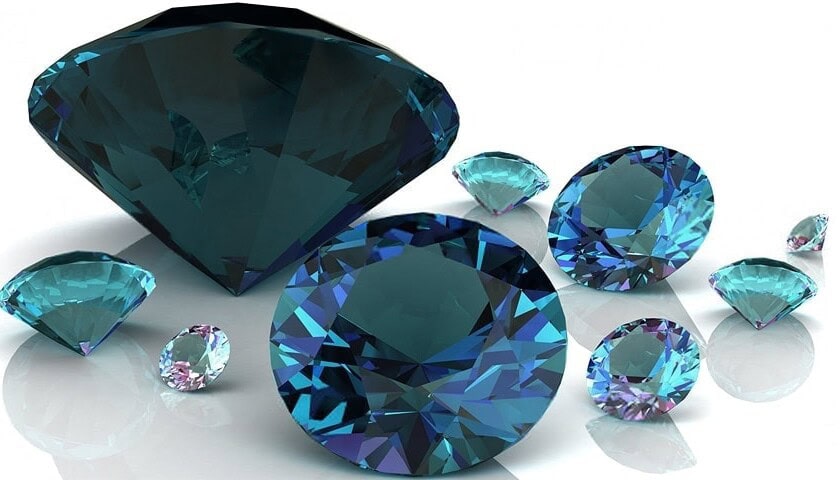
Upon discovery, the Russians were perplexed at its colored changing phenomenon (the Alexandrite effect). Since the stone showed red and green colors, which coincidentally happened to be Old Imperial Russia’s military colors, Alexandrite became Russia’s national stone.
It is one of the rarest of all colored gemstones available in the market. Just like the Cat’s Eye, Alexandrite is a variety of Chrysoberyl. However, it changes color depending on the light. Alexandrite changes color in daylight from bluish-green to purplish red under incandescent light. This color shift is due to its unique chemical composition, including chromium traces. Chromium is the same coloring agent found in emeralds.
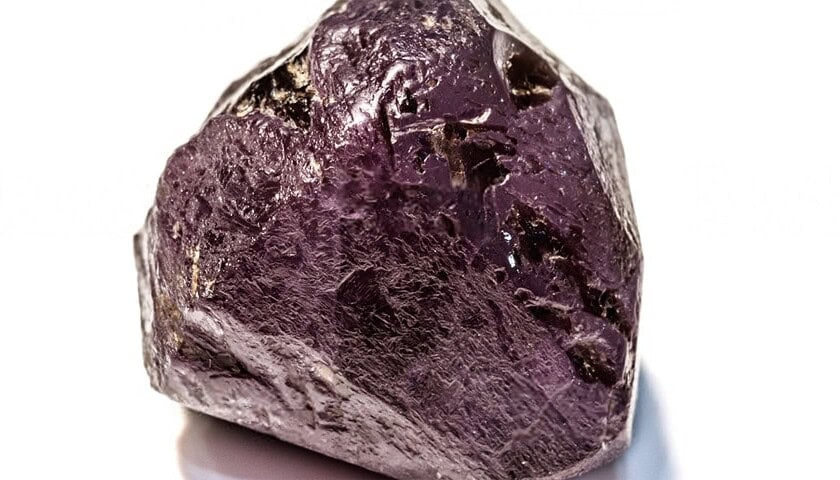
Alexandrite stones mined from Russian’s popular mines set the quality standard for the crystal. The stone is majorly mined in East Africa, Brazil, Burma, and Sri Lanka. Alexandrites mined from these locations generally pale compared to the vivid colors or Russian Alexandrites. Due to its scarcity, especially in larger sizes, Alexandrite is relatively expensive.
Alexandrite Healing Properties
Emotional Healing Properties
The stone holds great balancing properties that balances and harmonizes your physical, spiritual, and emotional beings. Alexandrite works with the Crown Chakra to initiate the emotional healing process by guiding you to the healing and love energies. Alexandrite is beneficial for individuals who want to solidify their intuition and improve their creative skills to utilize them in their private and professional lives.
Alexandrite helps individuals who are not in the habit of taking necessary breaks to relax their minds. The stone reminds rigid and excessively self-disciplined individuals to enjoy life since once time passes, it becomes hard to recover. Alexandrites constantly reminds you that life is fragile and should be enjoyed maximum.
Alexandrite attracts the forces of love and surrounds you with individuals who will love you dearly. The stone has positive energies that help you get up after being knocked down. The guidance and strength offered by this gem will direct you towards the proper path in life.
It also gives energies that will remind you of life’s constantly-changing nature. Not everything will always go your way since not everything is under your control.
Physical Healing
It is known to help with physical ailments. Alexandrite is recommended for individuals recovering from a long illness or surgery. It also has value for those suffering from chronic conditions.
Alexandrite can improve blood circulation by purifying your blood and strengthens your blood vessels. It also treats conditions affecting the spleen and the pancreas. It helps with leukemia treatment and neurological tissue regeneration.
Alexandrite also heals the reproductive organs and nervous system. It also helps in the assimilation of proteins. Moreover, it has a detoxifying effect to eliminate toxins and impurities from your body. Finally, the crystal relieves tension from your neck muscles.
Alexandrite Care and Cleaning
Alexandrite is superb for daily wear. However, you ought to be cautious and protect the stone from being exposed to harsh chemicals, scratches, and extreme temperatures. These conditions can weaken the alexandrite surfaces, exposing them to permanent damage.
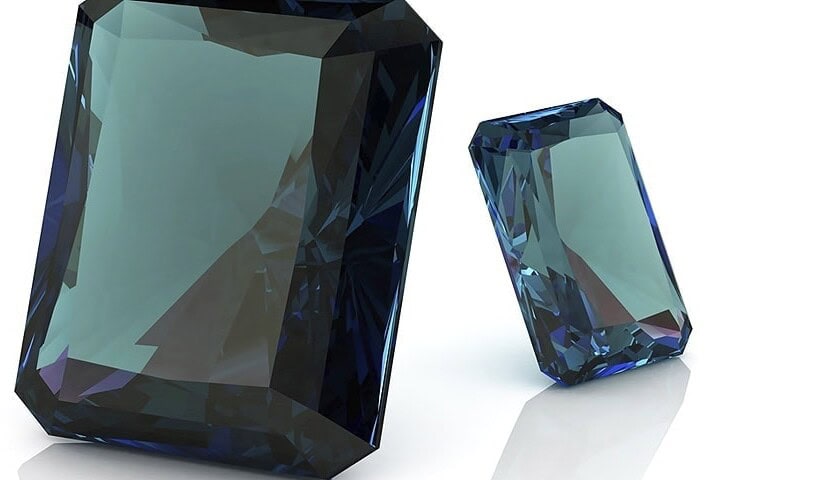
If you want to clean your Alexandrite crystal, the ideal way to clean it is to use warm, soapy water together with a soft brush. You can carry the stone with you in your pocket or bag for daily support and guidance. Hold it in your hands while meditating to receive healing, guidance, and deep insights.
Agate
Agate was the old traditional June birthstone in the ancient Russian, Polish, and Arabic calendars. Agate was the zodiac stone for the June month before being in these calendars as a June birthstone. It was named after the Achates River in Sicily by Theophrastus.
Agate is the striped or banded version of Chalcedony. It is made up of successive layers of material that are flat or curved. It also appears in different thicknesses, colors, and transparency.
Blue and green Agates are rarer than other Agate colors. This makes them the more expensive options. Agate’s pattern and color varieties have consequently led to several names for Agate species, including Fire Agate, Moss Agate, Lace Agate, and possibly hundreds of other names. Agate is known to stimulate eloquence and bring focus and calm.
Cat’s Eye
The Cat’s Eye was the traditional June birthstone from as early as the 15th Century to the 20th. It is also referred to as cymophane from the mineral chrysoberyl.
Cymophane is derived from the Greek words meaning “wave” and “appearance.” This is in reference to the haziness visually distorting what would ordinarily be seen as a properly-defined cabochon surface.
The effect is combined with a cat’s eye effect (chatoyancy). Chatoyancy is caused by the light reflection by parallel fibers, channels, or needles in the crystal. This effect almost resembles asterism, except there is one straight ray instead of six or four.
The Cat’s Eye belongs to the same group as the uncommon Alexandrite. It is majorly found in Zimbabwe, China, Sri Lanka, India, and Brazil. This yellow-colored June birthstone is distinguished for its iridescent luster or chatoyancy. The crystal is generally associated with focus and mental clarity.
Turquoise
Turquoise is a traditional June birthstone dating back to the 15th to the 20th Century. It is a green or sky-blue translucent to opaque basic aluminum phosphate containing copper.
The name originates from the French word “turquiese,” which means Turkish stone. It was first transported to Europe via a Turkish state. The color we refer to this color originated from this crystal.
The ancient Egyptians used this stone as a jewelry gemstone and decorative stone. They believed the blue color was a symbol of regeneration, meaning they used it for superstitious and decorative purposes. Native Americans used the stone in jewelry and art pieces, some believing that the crystal carried protective powers.
Turquoise has a 5-6 Mohs hardness that can distinguish it from similar gemstones such as smithsonite and chrysocolla. It exhibits a waxy to matt luster. It is a porous material, meaning it is impregnated with plastic, wax, or polymers to improve its color and harden its surface. Turquoise is known to bring luck and courage and relieving mental stress.
Chalcedony
Chalcedony is the traditional June birthstone in the old Russian, Polish, and Arabic calendars. It belongs to the quartz group of minerals. While Chalcedony refers to a wide quartz stone variety such as onyx, carnelian, and Agate, as a June birthstone, Chalcedony is meant to refer to the white Chalcedony.
Quartz is comprised of an oxygen and silicone mixture. It comes in two types, one with huge crystals, such as citrine, and one with small crystals like Chalcedony. Chalcedony is a pale-colored crystal with violet, lavender, gray, blue, or white being the most popular.
Chalcedony colors are even across the surfaces with no color zoning and markings. It is generally a translucent stone and sometimes has a milky interior, often taken as a sign of authenticity.
It has been one of the most treasured stones in ancient civilizations. Native American tribes consider the stone to be sacred and used it at traditional ceremonial gatherings to strengthens bonds between tribes. Chalcedony is thought to bring emotional balance and relieve depression.
Emerald
Emerald is the traditional June birthstone in the ancient Italian calendar. Previously, it was the talismanic Gemini stone and a zodiac stone for Cancer.
It is a green to a greenish-blue stone of the beryl mineral species. The green effect is a result of chromium and vanadium presence.
A genuine emerald ought to be dark and saturated enough, and if the color is considered too light, it then becomes a green beryl. Emeralds can be categorized into various species and tend to be differentiated by their origin as well as presence of particular impurities. These varieties include;
- Colombian emeralds
- Brazilian emeralds
- Zambian emeralds
- Cat Eye’s emeralds
- Trapiche emeralds
Of all top gemstones and crystals, emeralds are the most species with inclusions. As such as flawless emerald is almost hard to find. This June gemstone promotes emotional well-being and stimulates clairvoyance.
Final Thought
Pearl and emeralds are considered common and easy to find June birthstones. However, each of the above birthstones is rare and unique in its ways. The one common factor among all the above gemstones is their immense benefits. June birthstones improve your general emotional well-being and increase mental clarity. Gift a June birthstone to your loved one as a sincere expression of love and care.

